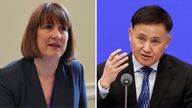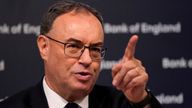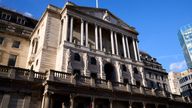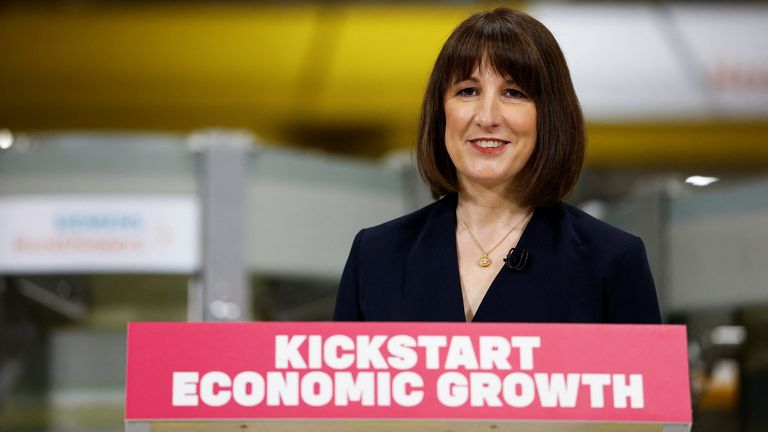Where do interest rates go from here?
Let’s start with the simple bit: interest rates have been cut – down by another quarter percentage point to 4.5%. But what happens next?
Not long ago, the answer was quite simple: the Bank of England would carry on cutting borrowing costs, one quarter point cut every three months, until they reached, say, 3.5%.
That, at least, was the expectation this time last year.
Money latest: First-time buyers warned over auctions
But things have become more complex, more unpredictable in recent months.
Instead there are two paths ahead of us. One of them, let’s call it the high road, sees those borrowing costs being cut only gradually, down to 4% in a couple of years’ time.
Down the other road, the low road, the outlook is quite different: rates will be cut faster and more. They go down below 4%, perhaps as low as 3.5%, perhaps even lower.
The funny thing about today’s splurge of information and forecasts from the Bank of England is that it’s not entirely clear whether we’re on the high road or the low road anymore.
Now, strictly speaking, the forecasts and fan charts produced by the Bank’s staff tend towards the former, more conservative view – the two cuts.
But then look at the voting patterns on the monetary policy committee (MPC), where two members, Swati Dhingra and Catherine Mann just voted for a full half percentage point cut, and you’re left with a different impression. That rates will go lower, and quickly.
And in truth, that’s what often happens when the economy is weakening.
When gross domestic product, the best measure of economic output, is flatlining or shrinking, when inflation is low (especially when you look beyond the temporary bump caused by energy prices) – that’s usually precisely the time the Bank slashes rates with abandon.
And that’s precisely the situation the UK finds itself in at the moment.
But the problem is that a few things have complicated matters. One is that the government decided to splurge more money in last October’s budget. That extra money sloshing around in the economy makes the Bank somewhat less willing to cut rates.
Another is that although the economy is weak, inflation is still high – indeed, the Bank actually raised its forecast for the consumer price index in today’s forecasts. Another is that the world economy has become a significantly more unstable place in recent months.
Germany is in recession. The US, under Donald Trump, is threatening tariffs on its nearest allies.
It’s not altogether clear whether the response to all this is lower interest rates.
Added to this, despite the chancellor’s best efforts, there is little evidence that her pro-growth policies are boosting economic growth – at least according to the Bank’s own forecasts.
These are tricky waters to navigate.
All of which helps explains why it’s no longer quite as clear as it once was what happens next.
My suspicion is that the Bank will end up cutting rates, probably more than those two cuts baked into its forecasts. But such forecasts are even more fraught than usual.




